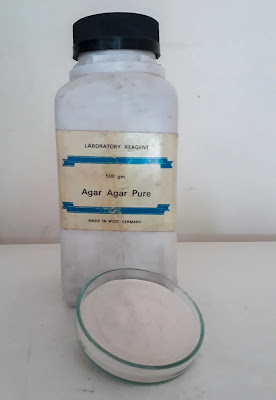Contents
hide
CHEMICAL PRODUCT IDENTIFICATION
- Read – Open the Power of Agar SDS!
- Product Name: Agar Agar.
HAZARDS IDENTIFICATION
- Signal Text: N/A.
- Emergency Overview: Agar is a naturally occurring thickening and gelling substance derived from several types of seaweed. It has no flavour or odour and is tasteless. Generally speaking, it is regarded as non-toxic & non-irritating.
- Routes of Exposure: Consumption & inhalation.
- Signs & Symptoms of Exposure: No significant exposure symptoms are anticipated.
COMPOSITION, INFORMATION ON INGREDIENTS
- Component Name: Agar-agar.
- CAS Number: 9002-18-0.
- Formula: (C12H<>18O9)n.
- Formula weight: ~120,000.
- Synonyms: Agar-agar gum, Bengal gum.
FIRST-AID MEASURES
- Contact the Doctor if you feel unwell.
- If inhaled: Remove the victim to fresh air and keep at rest in a position comfortable for breathing.
- If in eyes: Rinse cautiously with water for several minutes. Remove contact lenses if present and easy to do so. Continue rinsing.
- If on the skin: Wash with plenty of water.
- If swallowed: Rinse mouth. Consult a Doctor if you feel unwell.
HANDLING & STORAGE
- Handling: Limit contact with the skin & eyes. Handle in a room with good ventilation. After handling, carefully wash your hands.
- Storage: Store far from heat sources & bright sunshine in a cold, dry area. Keep the container firmly shut.
- It is sensitive to moisture, better to keep it in lab safety bags.
EXPOSURE CONTROLS/PERSONAL PROTECTION
- Engineering Controls: Utilize sufficient ventilation.
- Personal Protective Equipment: When handling or using the product, put on gloves, goggles, & a mask or respirator.
PHYSICAL & CHEMICAL PROPERTIES
- Appearance: Powder or flakes that are white or light-coloured.
- Solubility: It is soluble in hot water(creates a gell with it) & insoluble in cold water.
- Boiling Point: Not available.
- Flash Point: Not available.
- Vapor Pressure: Not available.
- Specific Gravity: Not available.
- As is, it is not a microbiological medium. The need for nourishment.
- Agar gel is made by: To 1 litre, combine 15 gm.
FIRE-FIGHTING MEASURES
- Fire & Explosion Hazards: Not explosive or flammable (solid).
- Fire-Fighting Procedures: Use water spray, foam, dry chemicals, or carbon dioxide to extinguish fires.
ACCIDENTAL RELEASE MEASURES
- Spill & Leak Procedures: Put on protective gear and clothing. Spill substances should be picked up & put in a container for disposal.
DISPOSAL CONSIDERATIONS
- Follow all applicable local, state, & federal rules before disposing of the product.
TRANSPORTATION INFORMATION
- Not a Dangerous Good, as Regulated.
REGULATORY INFORMATION
- Agar is frequently employed in the food & pharmaceutical industries as a thickening & gelling agent and is considered safe for human consumption. In the US, it is not controlled as a hazardous substance.
CONCLUSION
Agar is a naturally occurring, flavourless, odourless thickening & gelling substance derived from several kinds of seaweed. It is typically regarded as non-toxic and non-irritating. Care must be taken when handling it, & ventilation must be sufficient. It must be disposed of in compliance with all applicable state, local, & federal laws & kept in a cold, dry location. Agar is frequently employed in the food & pharmaceutical industries as a thickening & gelling agent & is regarded as safe for human consumption. In the US, it is not controlled as a hazardous substance. One must-read Agar SDS!

